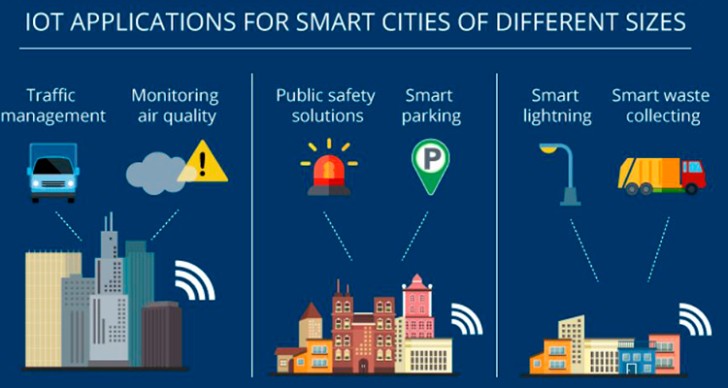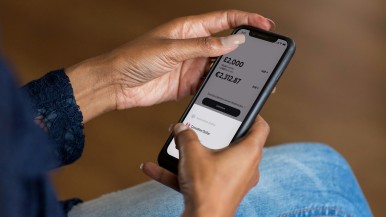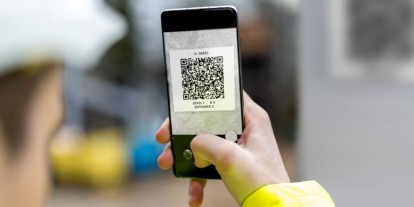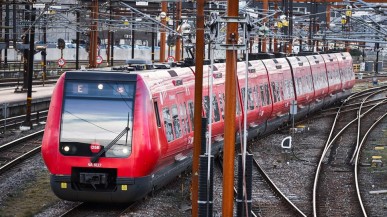Zigurat Global Institute of Technology
Blog / Disruptive Technologies
Internet of Things - One of the Building Blocks of a Smart City
Categories

Today we turn to the Internet of Things (IoT) and its thousand and one applications in the realm of smart cities. As it happens, smart cities hold some of the planet’s most awe-inspiring demonstrations of the IoT’s potential.
Modern urban spaces are hotbeds of new ideas and world-shaking innovations. As for urban adoption of connected tech: all things considered, it really makes practical sense. Densely populated areas stand to gain the most from improved surroundings, and depending on the city, they might already come equipped with the fundamental IT infrastructures, which makes the further adaption easier. Meanwhile, the IoT might also offer some solutions to ease the huge burden that the urban explosion has meant for the existing infrastructures.
IoT in a Nutshell
The name Internet of Things corresponds to a very visual idea of an object that is capable of connecting to the internet. That is to say, an object - a refrigerator, for example, that traditionally won't be connected to the Internet - now attains that ability. Nowadays, a street lamp or any type of object that hasn't traditionally been an Internet access point can become one for certain purposes. That is to say, not only an access point but also an element that is capable of capturing information from its entire environment and communicating with other objects, for example, the following street lamps. And it also has the ability to process and manage the information generated by itself and the other objects around it, so that these data can become useful information, a kind of perception of what happens in the environment of this object.
Connected City
Now let's extrapolate the potential use cases to an entire city in which we have many objects that are capable of capturing information and interacting with other objects. The street lamp can now not only communicate with the devices that are closest but with other objects that are connected to the Internet and process this information to make decisions, for example, about the intensity of the light that is the most appropriate. The objects can also send information about what is happening in their environment or process different information. If the information from the street lamp is processed alongside with information from a nearby traffic light, we can start talking about the IoT use cases in the smart city environment. When it comes to smart cities and the management of public space, the scope of possibilities, that IoT offers, is infinite. In other words, the IoT comes with considerable possibilities and room for maneuver within the field of smart cities. It is one of the aspects that we will touch in the Master's in Global Smart City Manager. IoT is a technology that is already there, that has been developed for a long time, but whose implantation in the public space will prevail in the years to come. And depending on the way we approach our smart city project or the implementation of this technology in public space, smart city projects will be developed in one way, or another, they will be able to achieve common objectives in one way or another.
Possible IoT Use Cases for Smart Cities
As we said above, the span of IoT use cases in smart cities is wide and has the potential to streamline multiple areas. Below you will find the list of some of the most common use cases around the globe.
- Smart parking An IoT solution will permit monitoring the availability of parking spots in the city. With the GPS data from drivers’ smartphones (or road-surface sensors in the ground), smart parking solutions let the user know when the closest parking spot becomes free to find a parking spot faster and easier instead of blindly driving around.
- Smart roads and smart traffic congestion management Different IoT solutions will permit to monitor vehicle and pedestrian levels to optimize driving and walking routes. The use of different types of sensors, as well as GPS data from drivers’ smartphones will help to determine the number, location and the speed of vehicles. Thanks to a cloud management platform which connects various traffic lights, the city will be able to monitor green light timings and automatically alter the lights based on the current traffic situation to prevent congestion. Better control of traffic congestion will also help to improve air quality.
- Smart public transport With the help of IoT sensors, we can obtain data to learn about the patterns of how citizens use public transport. Smart public transport solutions can combine multiple sources, such as ticket sales and traffic information. The users could also use an app to contact the authorities in case they spot incidents or suspicious activities.
- Smart street lighting IoT-based smart cities allow better maintenance and control of street lamps. Equipping streetlights with sensors and connecting them to a cloud management solution makes them more straightforward and cost-effective. With this system, the city can adapt the lighting schedule to the lighting zone and weather conditions.
- Smart waste management Waste-collecting is another service that could be optimized with an IoT-enabled solution by tracking waste levels, as well as providing route optimization and operational analytics.

Image Source: www.meee-services.com
Smart cities come in all forms, shapes and sizes, but so do IoT solutions that could be infused into a city’s operations. And even though they don’t exactly make a smart city, they do constitute an important building block of a smarter and more sustainable future. Image source: www.colombiainteligente.org



